Message from Majesti© on Dec 27, 2021, 5:35 pm.
The James Webb telescope has been launched into space by NASA. It took NASA 25 years and $10 billion to develop this groundbreaking telescope.
A heavy Ariane 5 launch vehicle was sent from France directly into Earth’s orbit. This project was extremely costly and time-consuming, with the telescope’s creation alone taking 25 years and 10 billion dollars. NASA, along with the space agencies of Canada and Europe, were involved in its development and implementation.
With the help of this telescope, scientists will gain insights into the origin of the first stars and quasars.
About 27.5 minutes after liftoff, the spacecraft successfully separated from the final stage and began its journey towards the Lagrangian point L2, located one and a half million kilometers away from Earth – nearly four times farther than the Moon. It will take approximately a month for the “James Webb” telescope to reach this distance, during which time it will deploy its solar shield and three-section mirror. Following this, there will be another six months devoted to equipment adjustment and testing.
This new telescope boasts a main mirror that is six times larger than the current Hubble, with a surface area of 27 square meters coated in gold. The enhanced light sensitivity and optic range will enable us to observe the first stars of the universe, gaining insight into their evolution, and explore the cosmos in search of exoplanets suitable for potential colonization.
Posted 29 minutes and 48 seconds later:
Attention everyone:
Hey there, folks!
Today is a big day as we are about to witness the launch of OneWeb satellites from the Baikonur Cosmodrome. The Soyuz-2.1b rocket will take off and head towards the north, giving us a chance to see a stunning visual phenomenon known as the “jellyfish” caused by the rocket engines. The launch is scheduled for 18:10 minutes in Tyumen time. Keep your eyes peeled because about 5-8 minutes later, you might spot a flying dot with a bright white tail in the southern direction.
Messages: 10283 Registered: Jan 11, 2007, 00:00 Awards: 2
Latest News in Astronomy and Space Exploration
Report from Pesec on January 9, 2022, at 8:36 PM.
The European Space Agency has recently shared fascinating footage captured by an Ariane 5 rocket. The video showcases the movement of the telescope as it distances itself from the rocket. However, what truly captivates viewers is the astonishing presence of numerous unidentified flying objects (UFOs) surrounding Earth’s orbit.
In this three-minute live video, viewers can witness the Webb telescope detaching from the rocket and steadily moving away. After approximately 69 seconds, the solar array elegantly unfolds. The telescope is on its way to a designated location approximately 1.5 million kilometers (just under 1 million miles) away from Earth. This location, known as the Lagrange point, is highlighted by NASA. However, the space agency conveniently fails to acknowledge the remarkable number of UFOs that are currently crowding Earth’s orbit.
Undoubtedly, NASA will argue that the substance in question is merely ice that dislodged from the rocket. However, I urge you to view the video and such explanations will undoubtedly elicit amusement. Various objects exhibit movement in disparate directions and speeds. Furthermore, there are instances where objects initially progress in one direction but subsequently halt and change course!
In my opinion, it goes without saying that unguided fragments of ice or “space debris” simply lack the physical capability to perform such actions.

Number of Posts: 13324 Date Posted: June 29, 2016, 2:14 pm. Awards: 1
Astronomy and Space News
Latest message by oioi ” 09 Jan 2022, 20:48 pm.
pesec wrote(a): Undoubtedly, NASA will claim that it is just ice falling off the rocket. However, I encourage you to watch the video and such explanations will simply make you laugh. The objects move in various directions and speeds. Moreover, there are objects that initially fly in one direction, but then stop and fly backwards!
I don’t think it is necessary to mention that unguided ice chunks or “space junk” are physically incapable of such maneuvers.
Does this commentator know that maneuvering engines exist?
Both the launch vehicle and the telescope are equipped with them, s.ka.
Experience is like the stylish hairstyle we adopt after losing our hair. (с)
How do you find the motivation to accomplish something? You simply don’t, just stay defeated! (с)
Why are you blabbering about all things related to household chores? – I simply don’t indulge in eating pancakes recklessly, unlike you. KMC.
Latest news in the field of astronomy, space, and more.
Announcement Majesti© " 02 Feb 2022, 15:05
In the month of March, the second stage of SpaceX’s Falcon 9 rocket, which was launched seven years ago, will collide with the moon
In a month’s time, the second stage of a SpaceX Falcon 9 rocket launched seven years ago will crash into the moon. Allegedly, this event is scheduled for March 4.
Based on calculations made by Bill Gray, a software developer specialized in tracking celestial objects, the rocket stage will reach the far side of the Moon, traveling at a speed of 9,288 kilometers per hour.
The collision with the Moon was not intended. The lack of fuel prevented the second stage of the launch vehicle from reaching the Earth’s atmosphere.
This event will mark the first occurrence of an artificial object unexpectedly colliding with the lunar surface. Astronomers on Earth will not witness the moment of impact, but spacecraft will be able to capture images of the crash site.
Messages: 10283 Posted: Jan 11, 2007, 00:00 Awards: 2
Latest updates on astronomy, space, and more!
Breaking news! 02 Feb 2022, 3:40 pm
A statement from Majesti© indicates that an unprecedented incident is about to take place—the first-ever accidental collision between an artificial object and the lunar surface.
Discover the latest in astronomy and space exploration!
Update from Majesti© May 27, 2022, 16:09
In just four days, on May 31, 2022, at 8:00 am Moscow time, get ready for an extraordinary event—a potentially powerful meteor storm! Experts predict that the maximum number of shooting stars could reach up to 100,000 per hour, equivalent to an astonishing 30 meteors per second! The last documented occurrence of such a phenomenon dates back to 1966, and no similar events are anticipated until the early 2100s.
Here’s a quick overview of our expectations: On May 31, 2022, at 08:00 Moscow time, the Earth will traverse through a spray of particles originating from comet 73P/Schwassmann-Wachmann, which were expelled during the comet’s nucleus collapse in 1995. The meteors will have a relatively low velocity of 12 km/sec, resulting in a slow and predominantly faint appearance. The radiant point can be found in close proximity to the luminous star Arcturus (alpha Volopas).

Latest updates on astronomy, space exploration, and more
Breaking News Majesti© " Jul 12, 2022, 4:12 pm.

The inaugural image has been transmitted by the James Webb Orbiting Telescope.
What sets apart the James Webb telescope from Hubble’s images are the 6 beams that most stars possess. Additionally, Hubble took several weeks to capture the photo, whereas Webb can accomplish a similar task in about half a day
According to NASA, the photograph depicts the SMACS 0723 galaxy cluster, “resembling a state from 4.6 billion years ago.” The picture showcases a portion of the sky “approximately the size of a grain of sand held at arm’s length by someone on Earth”
Tomorrow marks the arrival of the Super Moon and the closest approach to the Moon in 2022!
At 9:37 p.m. Moscow time on July 13, the Moon will once again reach its full moon phase. However, this particular full moon is quite extraordinary. The reason being that approximately 9.5 hours prior to reaching this phase, our natural satellite will pass through perigee at a distance of 357,264 km – the closest it will be to Earth in the entire year of 2022!
What is the extent of the Moon’s increased size and brightness? The Moon’s apparent diameter will expand by approximately 8% compared to the average, reaching 33.4 arcminutes, and its luminosity will increase by around 13%. These changes are not significant enough to be easily noticeable. Typically, individuals who observe a particularly bright and large Moon during a “super moon” event are already aware of it, which can make it challenging to remain completely objective. Moreover, the largest Moon will appear near the horizon during the evening and morning hours due to the phenomenon known as the “lunar illusion”.
For those of us who are passionate about astronomy, the “super moon” provides yet another opportunity to share our enthusiasm for celestial science and showcase the Moon through a telescope!
Number of Posts: 5074 Date Posted: May 18, 2006, 00:00 Awards Received: 1
Message stetor “July 12, 2022, 21:55.
During the weekend, I observed the Moon, Jupiter, and Saturn. They were all in their respective positions.
Mazda Demio ’99 LX (B3, 1.3, AKPP-3)
Nissan Almera Classic ’08 (QG16, 1.6, A/C-4)
Nissan Tiida hatchback ’11 Tekna (1.6, A/C-4)/IC-706+quarter
Chevrole Orlando 6013 HBO (1.8, MKPP-5)/Apolla+1/4, VX-3000 + 5/8
FLEX-1500+SG400+Delta-40+Bazuka-80, R8LO
Messages: 1043 Registered: 04 Jan 2013, 00:00 Awards: 1
News regarding astronomy, outer space, and related matters.
Notification from DavydovSD – 21st July 2022, 02:28
Although it may deviate from the main topic, I would like to mention that in the beginning of June, I had the opportunity to visit Korolev, a city that houses several educational institutions specializing in space studies. I was pleasantly surprised by the large number of young individuals, presumably students from these institutions. This experience gives me hope that not all is lost.
Latest News in Astronomy and Space Exploration
Breaking News: Majesti© Message – August 23, 2022, 13:17
The James Webb Space Telescope has captured a stunning new image of Jupiter, revealing visible auroras at the poles of this gas giant.
Check out the mesmerizing image below:

To view the image in its full glory, click here: https://vk.com/doc23697256_645610412?ha . zQtr3NeQXc
Number of Posts: 5074 Registration Date: May 18, 2006, 00:00 Awards: 1
Latest news in astronomy and space
Report from Stetor – Oct 19, 2022, 10:30 AM.
An upcoming solar eclipse is set to take place on October 25, 2022. We provide information on where it can be seen and delve into the astrological significance of this event.
The eclipse is predicted to happen at 13:49 Moscow time, with the Moon covering 86% of the solar disk. The point of maximum eclipse will be near the city of Surgut. Observers from both the Asian and European regions of Russia, including those in St. Petersburg, will have the opportunity to witness this phenomenon.
Mazda Demio ’99 LX (B3, 1.3, automatic transmission-3)
Nissan Almera Classic ’08 (QG16, 1.6, automatic transmission-4)
Nissan Tiida hatchback ’11 Tekna (1.6, A/C-4)/IC-706+quarter.
Chevrolet Orlando ’13 HBO (1.8, MKPP-5)/Apolla+1/4, VX-3000 + 5/8
FLEX-1500+SG400+Delta-40+Bazuka-80, R8LO
Latest Astronomy and Space News
Announcement from Majesty© – October 19, 2022, 18:26
In Tyumen, the peak phase will occur at 16:02:

Number of Announcements: 4207 Membership Since: May 19, 2012, 00:00 Awards: 1
Latest Updates in Astronomy and Space Exploration
Message from lol-85 – Oct 19, 2022, 19:28
Latest Updates in Astronomy and Space Exploration
Message from Majesti© – Oct 20, 2022, 16:15
The James Webb Space Telescope has recently captured awe-inspiring images of the famous “Pillars of Creation” located in the Eagle Nebula (M16)‼
The “Pillars of Creation” refer to a remarkable cluster of interstellar gas and dust situated 7000 light-years away from Earth. These pillars were first photographed by the Hubble Space Telescope in 1995, and the image quickly gained significant attention as it showcased the mesmerizing process of star formation unfolding right before our eyes! The tallest pillar on the left measures an astonishing 4 light-years in height.
Excitingly, on October 19, 2022, NASA released new images of the same “Pillars of Creation”, this time captured in the near infrared spectrum by the James Webb Space Telescope.
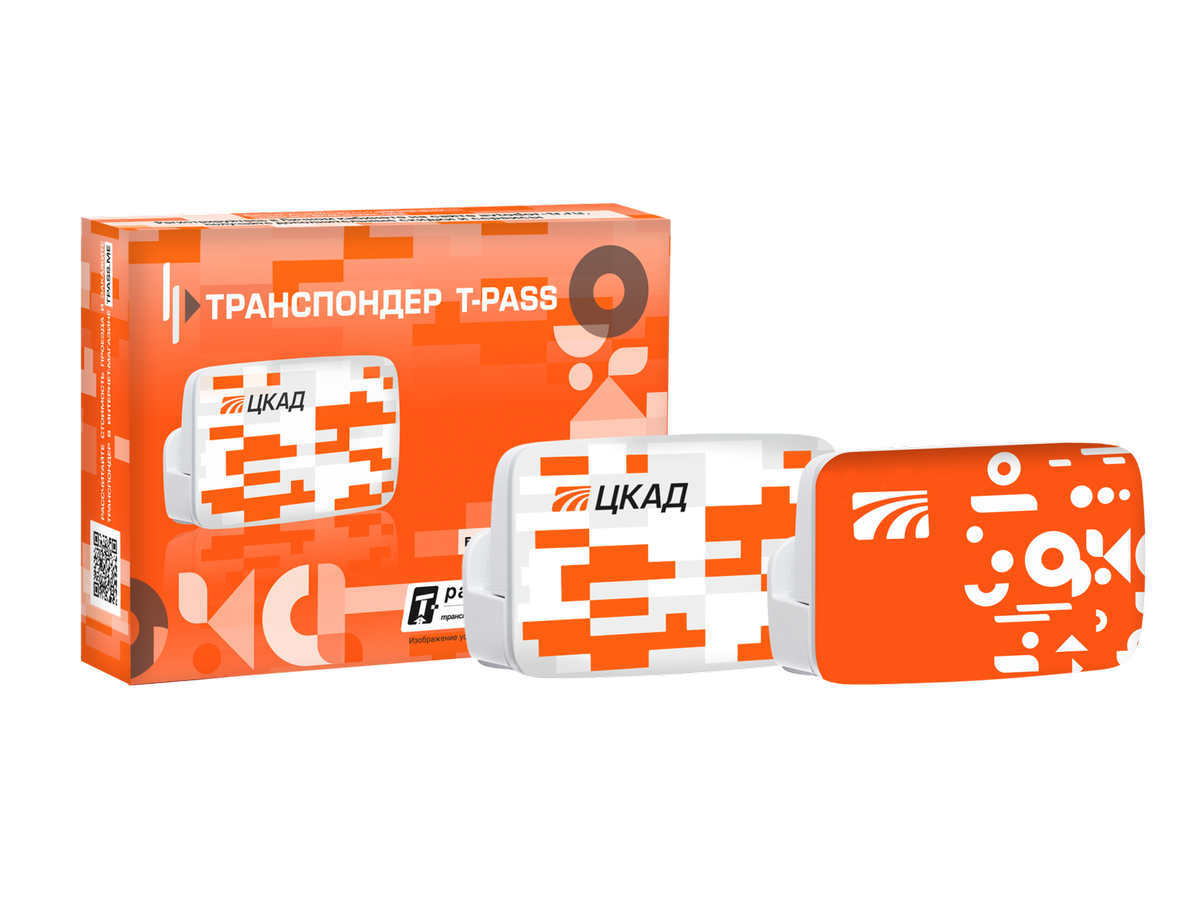
The image on the left is captured by the Hubble Space Telescope, while the image on the right is taken by the James Webb Space Telescope. The James Webb Space Telescope provides a high-resolution image that reveals intricate details in the star formation region. Operating in the infrared band, this telescope allows us to peer deeper into the nebula and observe objects that were previously inaccessible to other telescopes. The level of detail captured is truly remarkable!
Photo details: PHOTO BY LIST, 5 MB, Size: 3547*6144 PIXELS
Link to the photo: https://vk.com/doc265309_646854624?hash . Pi6DIwYwHH
Posted 19 hours, 23 minutes, and 9 seconds later.

Yesterday, the hopes of witnessing a solar eclipse with a remarkably high phase in Tyumen were dashed due to the cloudy weather and rain. However, in other cities where the coverage percentage was not expected to be as high, the weather was clear and the eclipse was visible. Towards the evening, as the sun descended low on the horizon, it occasionally peeked through the breaks in the clouds. The eclipse was not yet over, as the moon continued to cover a small portion of the sun.
Messages: 5894 Posted: Jul 29, 2009, 00:00 Awards: 2
Latest news on astronomy, space, and more
Breaking News Coolybin – Feb 13, 2023, 10:06 am.
General Glen Van Herk, the head of the Joint Aerospace Defense Command of North America and the Northern Command of the U.S. Armed Forces, has not completely dismissed the possibility that the objects shot down over the United States and neighboring Canada in the past week could be of extraterrestrial origin. He emphasized that this matter should be investigated by U.S. intelligence agencies.
“I will leave it up to the intelligence community and counterintelligence to determine. I am not ruling anything out at this stage,” he stated in response to inquiries about whether the Pentagon had abandoned the idea of extraterrestrial involvement in the objects.
Van Herk acknowledged that the current status of the U.S. military’s ability to identify the objects in the air is uncertain. He stated, “I wouldn’t describe them as balloons. We don’t simply label them as objects.” The general speculated, “It’s possible that there may be gas-filled balloons inside these structures, or they could have some type of propulsion system.” He noted that the objects were similar in size and speed of movement. However, Assistant Secretary of Defense for the Western Hemisphere Melissa Dalton pointed out that these objects were distinct from the Chinese balloon that was shot down on February 4th. In that case, the U.S. military had a clear understanding of what they were dealing with.”
Astronomy and Space News
Latest Update from Majesti© – February 13, 2023, 2:00 pm
An unexpected celestial event occurred today at 6:00 am on February 13, as a meteorite made its descent between France and England! Remarkably, this event was successfully predicted in advance, marking the 7th instance of accurately forecasting an asteroid’s impact on Earth. Furthermore, enthusiasts managed to capture videos of this extraordinary bolide! The era of accurate bolide prediction has arrived!
On February 12, at 23:18 Moscow time, astronomer Krisztián Sárneczky made an intriguing discovery at the Piskeszető Observatory in Hungary. Utilizing a 60-cm telescope, Sárneczky identified a previously unknown asteroid amongst a cluster of +19 stars.
The meteoroid, initially designated as “Sar2667”, had a size of less than 1 meter, making it more appropriate to refer to it as a meteor. It was discovered that this celestial object was on a trajectory towards Earth and was set to collide with our planet in just 7 hours! Preliminary calculations provided the following information: the object would enter the Earth’s atmosphere at 05:59 Moscow time, with coordinates 49.8°N, 0.4°E – precisely the strait between England and France (over the coast of France). The entry speed into the Earth’s atmosphere was measured at 14 km/sec. Remarkably, these calculations proved to be accurate! Dozens, if not hundreds, of individuals intentionally gathered to witness this extraordinary event, which occurred exactly as predicted at the specified coordinates.
This is an amazing present for all astronomers as we approach the 10th anniversary of the collapse of the Chelyabinsk meteorite. Over the course of a decade, we have become skilled at capturing asteroids (meteoroids) that are as small as 1 meter in diameter and are located even farther than the distance of the moon’s orbit. Furthermore, we have developed the ability to anticipate their descent in advance!
UPDATE: The asteroid has now been officially labeled as “2023 CX1” in the recently released MPEC Circular 2023-C103.
For those who are interested, it’s worth noting that this atmospheric phenomenon is known as a bolide (or a superbolide if it is 100 times brighter than the full moon, reaching a magnitude of -17 or brighter).
Latest News in Astronomy and Space Exploration
Breaking News from Majesti© – April 8, 2023, 1:22 pm.
Discover the Interactive Mars Map, where you can explore the planet’s surface in detail by simply moving your cursor. Check it out here.
Latest News in Astronomy and Space Exploration
Breaking News from Majesti© – April 18, 2023, 15:31
Residents of Tyumen will have the opportunity to witness a mesmerizing meteor shower from April 22 to 23. The celestial spectacle will continue until the 29th, with its peak expected on April 22-23. For the best viewing experience, it is recommended to find a location away from city lights and other sources of light pollution.
Latest News in Astronomy and Space
Breaking News – Majesti© " April 23, 2023, 10:55 PM
The current celestial spectacle in Tyumen includes the moon and Venus illuminating the night sky. Take a look at these breathtaking images:

Hold on tight, because in just an hour, a shock wave caused by a solar ejection is expected to hit Earth! This phenomenon will likely result in dazzling auroras visible at the latitude of Moscow.
The evening ejection from the Sun that occurred on April 21, 2023 has finally reached the DSCOVR satellite. Positioned 1.5 million kilometers away from Earth in the direction of the Sun, it will take approximately 50 minutes for this ejection to reach our planet after its detection on the satellite.
At this moment, most of the Russian territory will be covered in darkness, and the waxing Moon will not significantly hinder observations.
We advise anyone interested in observing or photographing the event to move away from large, well-lit cities towards the north, as that is where the aurora will be visible above the horizon. If the optimistic forecast comes true, the northern lights may even be visible as far south as the latitude of 55°N. This means that cities like Moscow, N.Novogorod, Kazan, Yekaterinburg, Novosibirsk, Omsk, and Krasnoyarsk may have the chance to witness this natural phenomenon.
Posted 13 hours 18 minutes and 28 seconds later:
Yesterday evening, an incredibly intense geomagnetic storm struck the Earth. On the scale of power, it measured an 8 out of 9. The cause of this storm was a plasma clot that was expelled from the Sun on April 22 at 23:00 (Tyumen time). Approximately 24 hours later, it collided with the Earth’s magnetosphere, resulting in strong disruptions of the magnetic field and stunning auroras that could be seen as far as the Caucasus!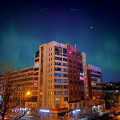
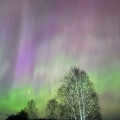
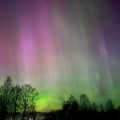
According to data from space weather monitoring, the Earth’s magnetic field is currently experiencing a high level of perturbation, reaching G4 on a scale of five indicators, where G5 represents an extremely strong disturbance and G1 represents a weak disturbance.
At the G4 level, there is a possibility of significant disruption to radio communications, prolonged interruptions to satellite and radio frequency navigation, as well as severe interference with communications on Earth.
Number of Messages: 5074 Date of Post: May 18, 2006, 00:00 Awards: 1
Astronomy, Space, and More News
Breaking News: April 24, 2023, 11:10 PM
Here are some recent vehicle models:
- Mazda Demio ’99 LX (B3, 1.3, 3-speed automatic transmission)
- Nissan Almera Classic ’08 (QG16, 1.6, 4-speed automatic transmission)
- Nissan Tiida hatchback ’11 Tekna (1.6, A/C-4)/IC-706+quarter
- Chevrolet Orlando ’13 HBO (1.8, 5-speed manual transmission)/Apolla+1/4, VX-3000 + 5/8
Also, FLEX-1500+SG400+Delta-40+Bazuka-80, R8LO is available.
Latest News in Astronomy and Space
Breaking News from Majesti© – May 7, 2023, 20:18
Just when we thought things couldn’t get any more exciting, a meteorite makes its grand entrance 😳😄
Earlier tonight, at approximately 01:20 a.m., a video recorder captured footage of a
falling meteorite near the residential area known as “Zvezdny Gorodok” and the popular shopping center called “CityMall”.
Watch the incredible video here: https://vk.com/video-116664742_456241906
Latest News on Astronomy and Space
Update from Majesti© – May 23, 2023, 23:28
Here’s an exciting event happening right now in Tyumen’s sky: the Moon and Venus are in conjunction! Take a look at these stunning images:

Don’t miss out on this unique phenomenon, known as “ash light,” which can be observed without any aids. Just gaze towards the northwest in the sky of Tyumen.
Notification Majesti© " 09 Aug 2023, 1:02 pm.

Only 14 days left!
Mark your calendars for August 23rd, when a large asteroid measuring up to 960 meters in diameter will come close to our planet, traveling at a staggering speed of 14.25 km/second. That’s almost 1 kilometer per second!
This celestial object will fly by at a distance of approximately 6 million kilometers from Earth, precisely at 11:18 Moscow time. It’s worth noting that any astronomical bodies that come within a distance of less than 7.5 million kilometers from Earth’s orbit are considered potentially dangerous.
On August 1, there will be a super moon. It seems that there have been more frequent occurrences of super moons lately. In fact, there will be 4 consecutive full moons – July 3, August 1, August 31, and September 29 – that can be considered “super” because they all happen near the perigee, which is the point of closest approach between the Moon and the Earth. These series of 3-4 super moons are actually quite common and happen every year. For example, last year there were also 4 consecutive super moons – May 16, June 14, July 13, and August 12. However, not all super full moons (Full Moon at Perigee) are the same. The main factors for this phenomenon, scientifically known as perigee syzygy, are the distance of the perigee and the proximity of the Full Moon to it in time. It is incorrect to assume that the closest point of the Moon’s orbit (perigee) is always at the same distance from the Earth. The perigee distance of the Moon ranges from 356,355 to 370,399 km, a difference of 13,984 km. Additionally, the full moon phase can occur a day earlier or later than the time of passing this point. Therefore, “Ultimate full Moon perigees” occur when the full moon coincides with the minimum perigee. These are rare events indeed. The last one occurred on November 14, 2016, and the closest one is expected on November 25, 2034, when the full Moon will be at a distance of 356,448 km, with only half an hour difference between the perigee passage and the start of the full moon.
Today, we are anticipating the “Sturgeon Moon” – this is what the Native Americans of North America called the August full moon, as August was considered the most successful time for sturgeon fishing. At 10 p.m., a full orange-yellow Moon will rise over the southeastern horizon. It will be about 8% larger and 13% brighter than a regular full moon. It always appears larger near the horizon due to the “Moon illusion”. The perigee point (357,530 km) will not be reached until the next day at 11 a.m. You can observe the super moonrise with the naked eye from any location where the southwestern horizon is visible.
Here is a unique photo taken in Tyumen on August 1, 2023:

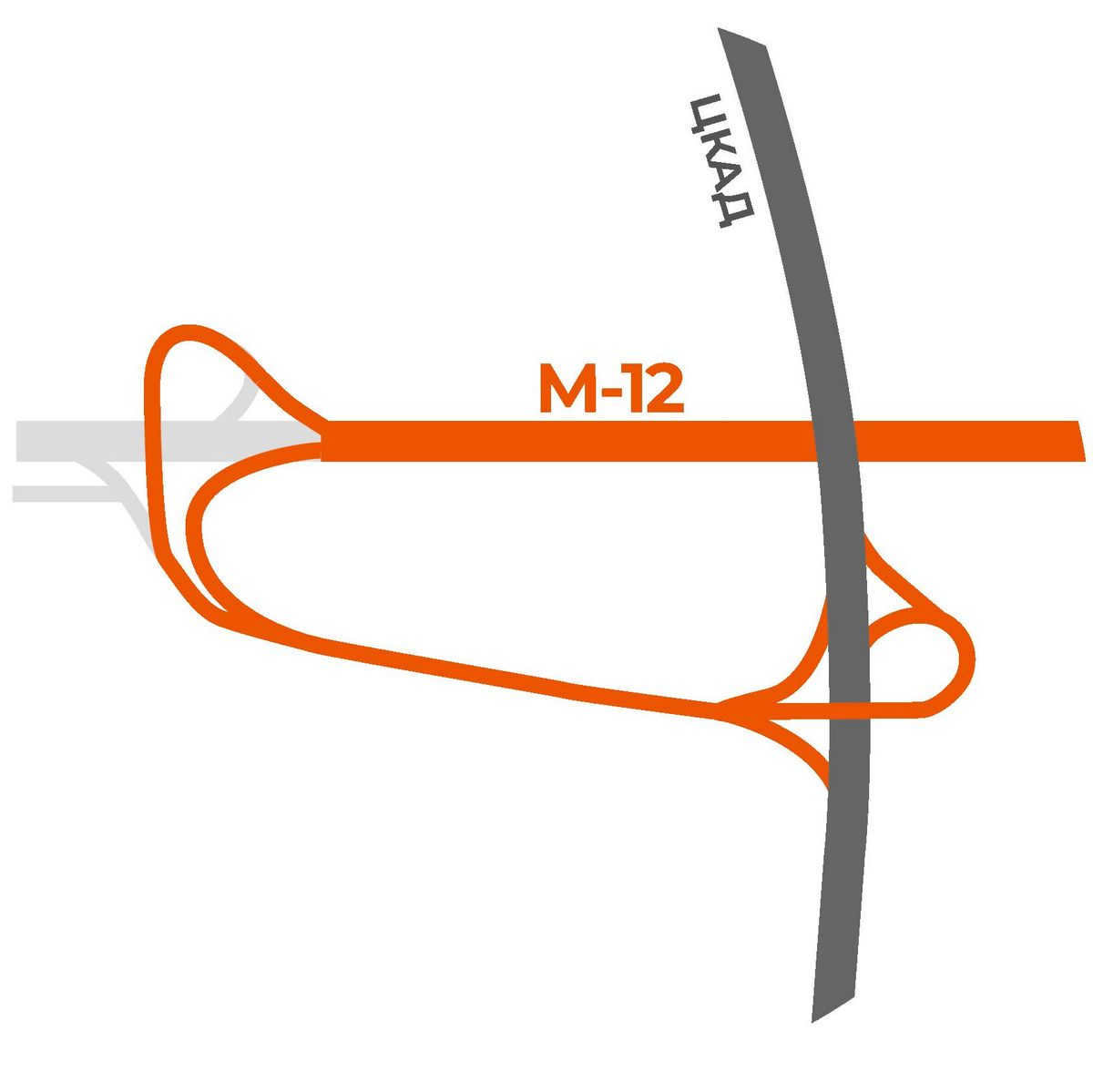
The Central Ring Road is currently the most ambitious road infrastructure project in the Moscow region. It aims to serve as the foundation for Russia’s expressway network and its contribution to international transportation corridors. The project is being executed based on the principles of public-private partnership.
The Central Ring Road plays a crucial role in the capital’s transportation system as it alleviates traffic on the Moscow Ring Road and the road network of the Moscow Region. It stretches 50 kilometers away from the Moscow Ring Road, covering a distance of 336 kilometers. Out of this total length, 260 kilometers are subject to toll charges.
The management of the Central Ring Road is being transferred to the State Company Avtodor for trust management purposes.
AvtoDor-Paid Roads LLC serves as the toll operator and issuer of the Electronic Toll Collection System (ETCS).
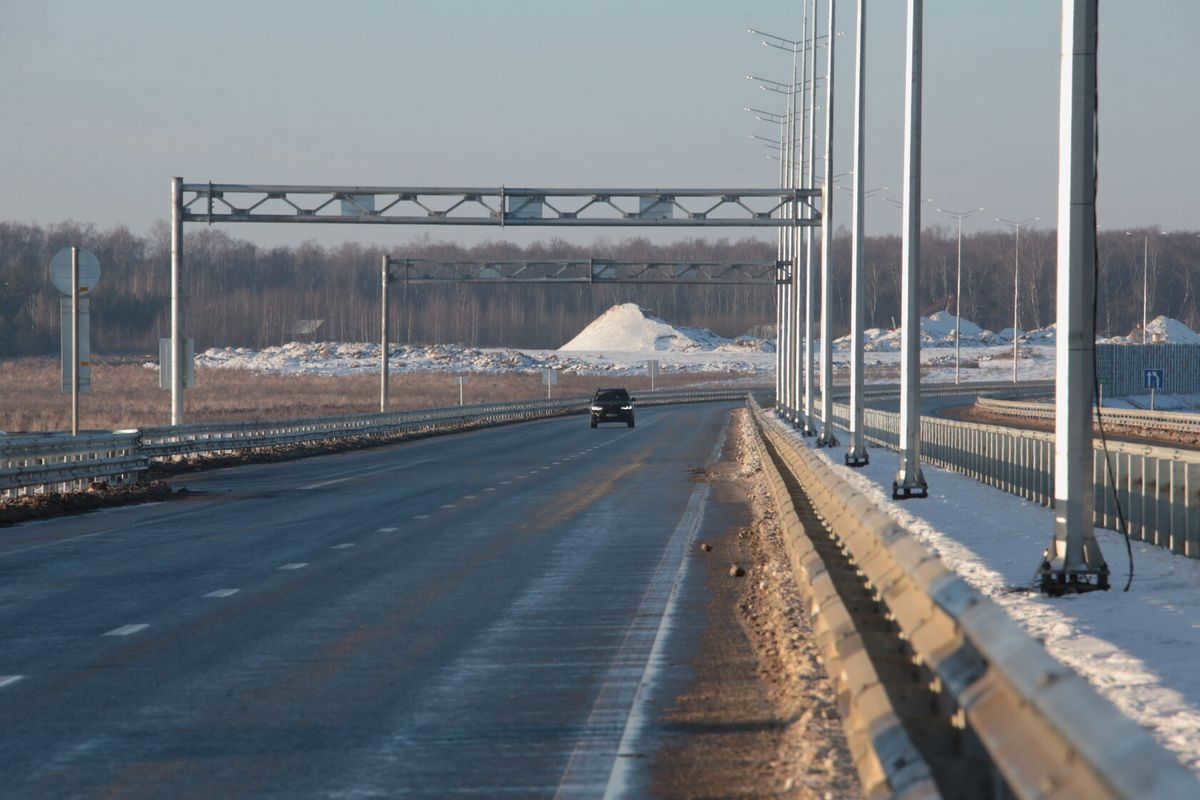

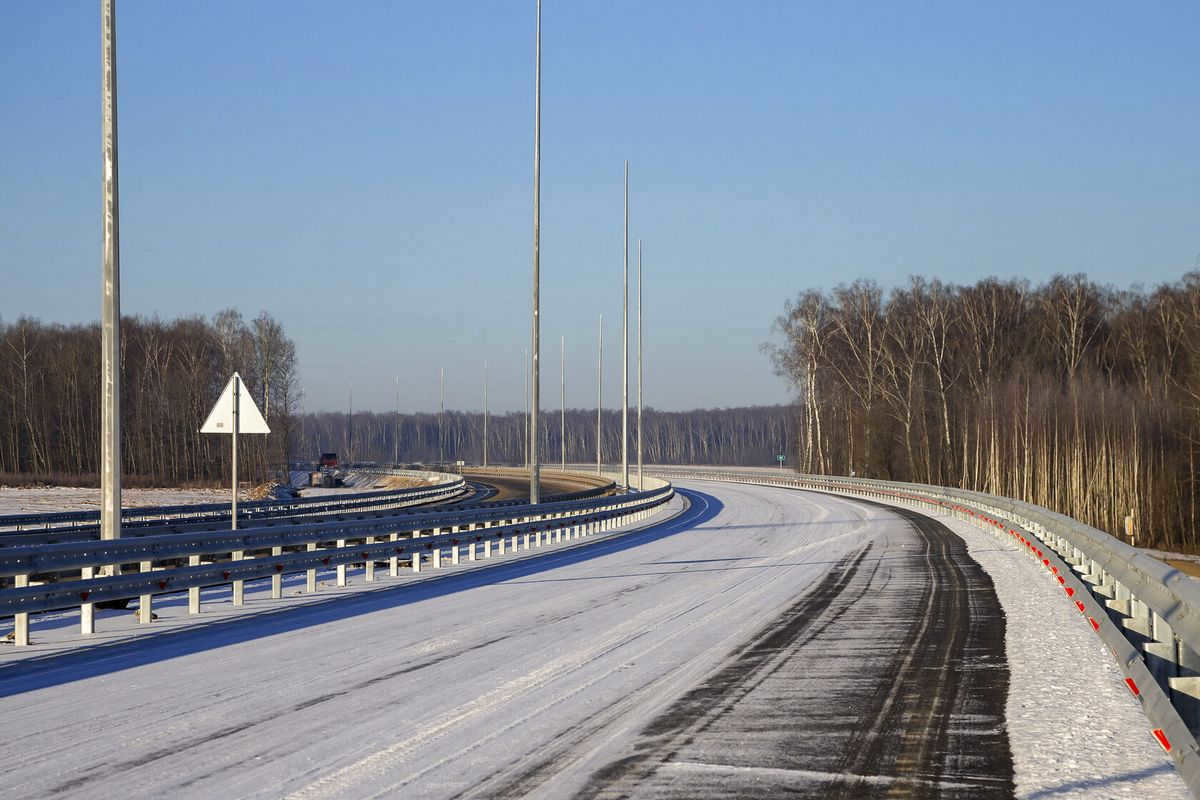

Payment Methods on the TSKAD
Purchasing Tickets Prior to Travel
Introduction of the “Free Flow” System
The Central Ring Road has implemented an innovative “Free Flow” system, which enables vehicles to pass through checkpoints without barriers. This system operates by deducting the toll fee automatically from the driver’s T-pass transponder account using DSRC antennas. Camera-sensors installed on the checkpoints read the car’s license plate number from both the front and rear, determine its category, and record the transaction associated with the license plate number in the absence of a transponder.
Unlike other systems, the barrier-free entry system does not require physical barriers. This system aims to alleviate traffic congestion on busy sections of the road and enhance convenience for drivers.
How to pay for a trip without using a transponder

ASSISTANCE HUBS
MAINTENANCE HUBS
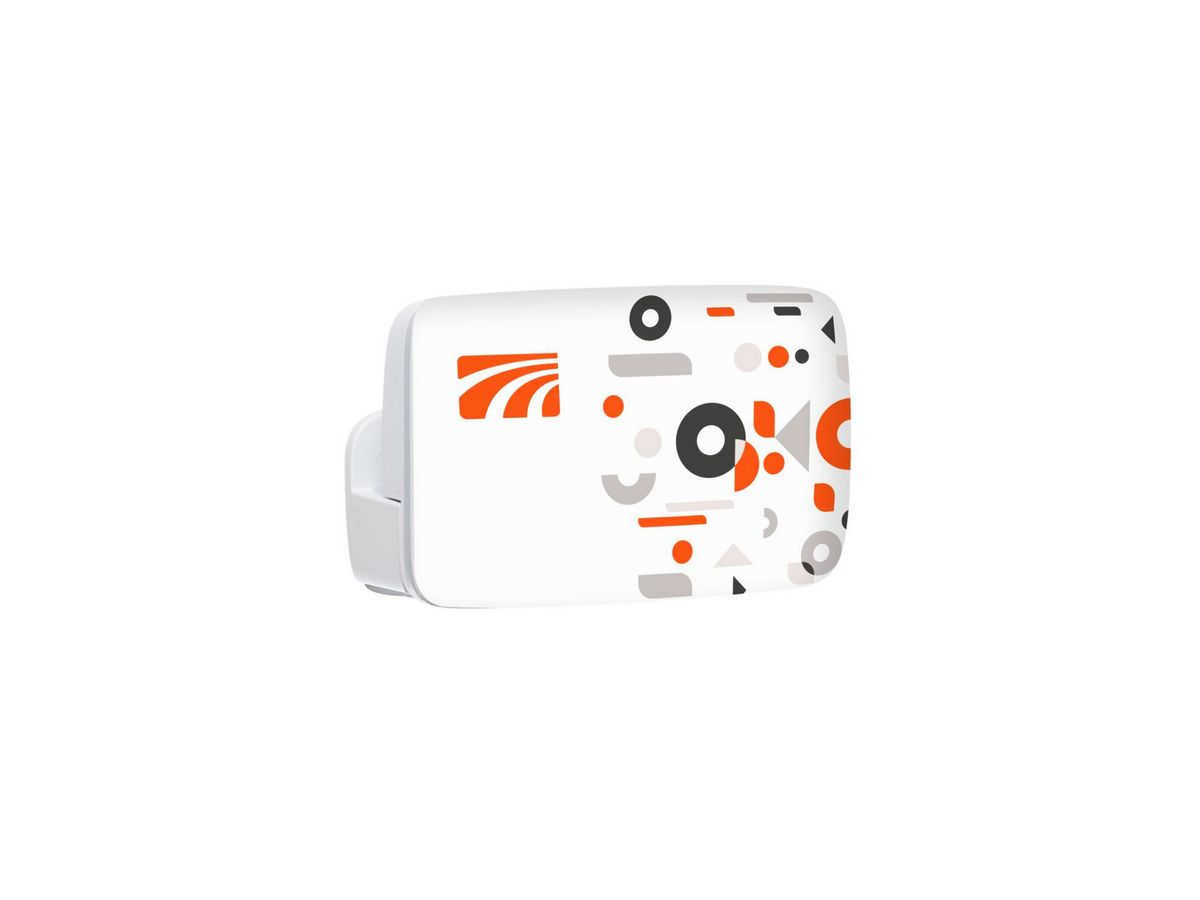
T-PASS TRANSPONDER
The T-pass transponder is a digital device utilized for making toll payments on toll roads. It allows drivers to pass through toll collection points without stopping and pay the tolls in a contactless manner. When driving on the Central Ring Road, which is equipped with the barrier-free toll collection system called “Free Flow,” the toll amount is automatically deducted from the transponder’s personal account upon passing through the section. This not only offers convenience but also proves to be cost-effective. Through the Avtodor Loyalty Program, users can avail a discount of up to 15% on their future trips. Additionally, users have access to 24/7 support via the *2323 helpline, cost management tools, detailed transaction information, balance replenishment through myAlpari, and other customer service features.

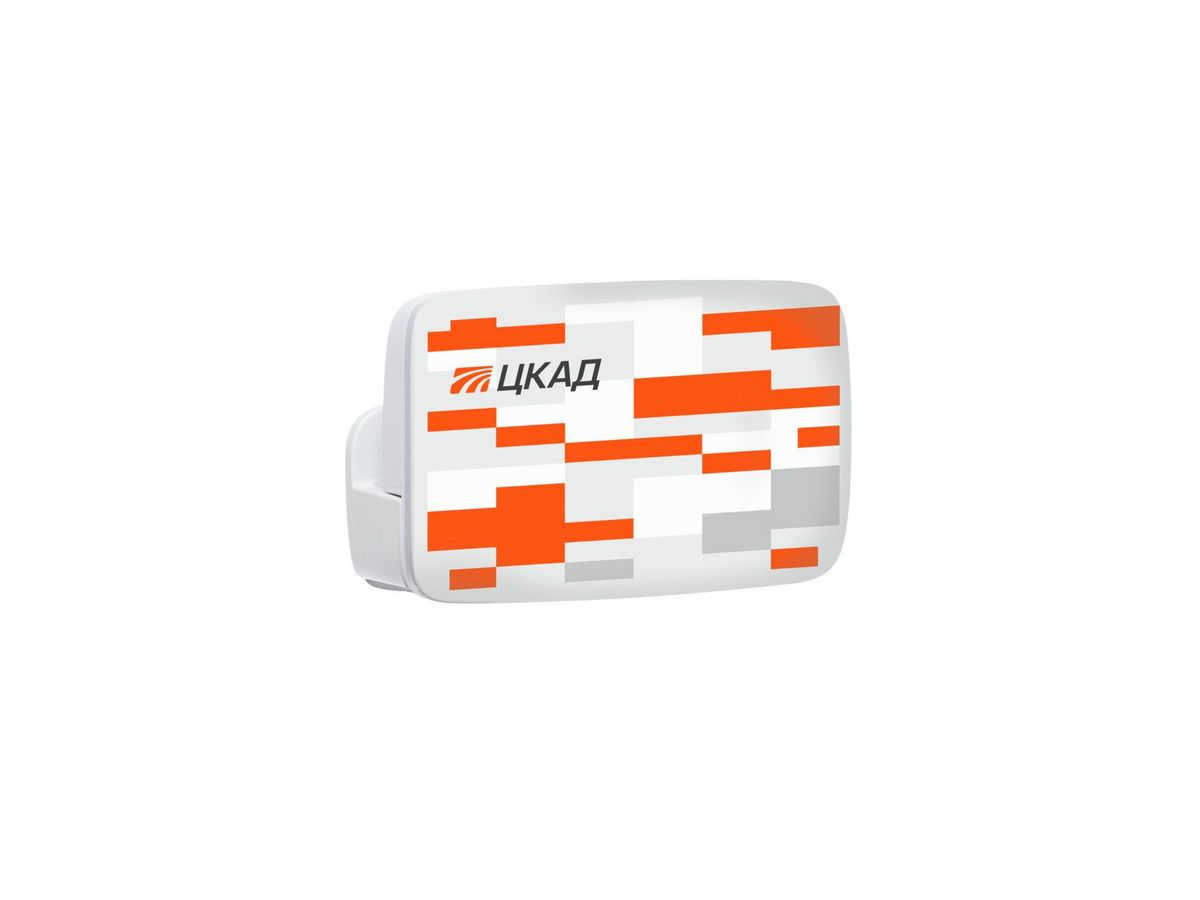

The Support and Service Center is situated within the premises of the Fare Management Center and functions from 09:00 to 21:00, seven days a week, without any breaks.
Adjacent to the Central Control Point of the EO CSKAD, the Support and Service Center operates from 09:00 to 21:00, every day of the week, without any interruptions.
Positioned in a modular office on the outskirts of the ring, the Support and Service Center adheres to a working schedule of 09:00 to 21:00, without any breaks or weekends.
Furthermore, an additional office is located at 72 Poselkovaya St. within the Panorama shopping center. Operating hours for this office are as follows: Monday – Thursday: 09:00-18:00, Friday: 09:00-16:45, and Saturday – Sunday: closed.

There is another office situated in BC “Europe” on the third floor. You can find it at 19 Fedorova Street. The office is open from Monday to Thursday from 09:00 to 18:00, on Friday from 09:00 to 16:45, and closed on Saturday and Sunday.

The Support and Service Center can be found in a modular office situated on the inner part of the Central Ring Road. It operates within the following hours: from 09:00 to 21:00, with no breaks or weekends.

The Support and Service Center is situated in a modular office on the outskirts of the Central Ring Road and operates from 09:00 to 21:00, seven days a week, with no breaks.
Frequently asked questions
1. What is the Central Ring Road?
The Central Ring Road (CRR) A-113 (Moscow Region) is a road that has been entrusted to the management of the State Company “Russian Highways”. Its primary objective is to alleviate traffic congestion on federal roads and the Moscow Ring Road by diverting transit traffic away from Moscow.
2. Where can you find the Central Ring Road?
The Central Ring Road (CRR) A-113 is located in the Moscow Region and New Moscow, about 50 km away from the Moscow Ring Road. It runs parallel to either the Small (A-107, “Moscow Small Ring”) or the Big (A-108, “Moscow Big Ring”) Ring.
3. What is the basis for the toll charges on the Central Ring Road?
The toll charges on the Central Ring Road are based on the Order of the Government of the Russian Federation No. 1972-r, issued on September 3, 2019.
- Traffic on the second section of the Central Ring Road-5, from the village of Zhedochi to the M-3 “Ukraine” highway, was opened on January 28, 2020.
- A 23-kilometer section of the Central Ring Road-5, from Mozhaiskoye Highway to Novorizhskoye Highway, started operating on June 29, 2020. No tolls will be collected for traveling along these sections of the Central Ring Road-5.
- The Central Ring Road-3, which is 105.9 km long, was opened for traffic on November 11, 2020. This section passes through the north-west of the Moscow region and connects the M-11 Neva expressway and the M-7 Volga highway.
- Several sections were opened on December 28, 2020: CKAD-4 (96.846 km), CKAD-1 (total section: 49.5 km, to be opened: 23.8 km), CKAD-5 (remaining 41.358 km of 76.44 km), CKAD 3-5 (5.9 km).
- On July 8, 2021, the complete opening of the Central Ring Road (CSKAD-1) was achieved, with the last section of 49.5 km being opened to traffic.
- The purpose of the Central Ring Road is to relieve the radial exits from Moscow and the city’s street network from heavy and transit traffic.
- Another objective is to optimize the distribution of freight by improving the transportation structure.
- The Central Ring Road also serves as a crucial component of international transportation corridors that pass through the Moscow region.
- Furthermore, the construction of the Central Ring Road aims to facilitate the integrated development of Moscow, the Moscow Region, and neighboring regions such as Tver, Yaroslavl, Vladimir, Ryazan, Kaluga, Tula, and Smolensk, by leveraging the positive impact of this infrastructure project.
- Enhancement of social, economic, interregional, and international connections, amplifying the mobility of the population and market entities
- Enhancing road safety and the level of service for users of highways
- Diminishing transportation expenses and the level of transportation costs for shippers
- Diminishing the level of adverse environmental impact by relieving congestion on the main sections of radial roads in the Moscow Region.
7. How can I confirm that I have entered a toll road on the Central Ring Road?
Before entering the toll road section, there are informative signs and billboards that indicate the access to the toll road. Additionally, there are signs and a detour scheme that guide drivers to the toll road section using an alternative route. Drivers have the option to choose whether to use the toll road or take an alternative route.
- The A-107 is a public highway of federal importance known as the “Moscow Small Ring”. The average traffic speed on the A-107 “Moscow Small Ring” is 60-80 km/h. It consists of one lane in each direction.
- Heavy vehicles are only allowed to travel on the Moscow Ring Road at night, unless they have special permission.
- Road junction No. 18 is the intersection with the M-11 “Neva” highway, located at 0 km.
- Road junction number 19: Intersection with A 107 (MMK) Nikolskoye-Gorki, at a distance of 15 km
- Road junction number 21: Intersection with M-8 “Kholmogory” highway, at a distance of 55 km
- Road junction number 1: Intersection with M-7 “Volga” highway, at a distance of 105 km
- Central Ring Road – M-12 interchange
- Interchange number 2: Intersection with Nosovikhinskoye Highway
- Interchange number 3: Intersection with Egoryevskoye Highway
- Interchange number 5: Intersection with M-5 “Ural” highway
Traffic interchanges on the Central Ring Road-1:
Transport interchange No. 8 Intersection with M-2 “Crimea” highway
To access road 46N-08850 from the inner side of the Central Ring Road (heading towards M-3 “Ukraine”), it is necessary to make a U-turn in the Novgorodovo SNT area and continue on the main road until reaching the junction for 46N-08850.
11. How can I get from M-11 “Neva” to the Central Ring Road heading towards M-7 “Volga” (towards Moscow)?
The exit from M-11 “Neva” to the Central Ring Road is only available when driving from Moscow. If you are coming from Tver, you will need to:
1) use the junction near Nikolskoye-Gorki on the A-107 “Moscow Small Ring” highway;
2) if you miss the exit to A-107 “Moscow Small Ring,” you can turn around at km 23 of the M-11 “Neva” highway to reach the exit to the Central Ring Road when driving from Moscow.
1. What is the concept of free flow?
Free flow is an innovative tolling system that enables vehicles to pass through toll gates without any barriers. This system, known as the Tolling Frame (TF), allows cars to seamlessly travel in a non-stop free flow mode, with the toll being automatically deducted from the personal account linked to the T-pass transponder. The TF is equipped with advanced technology that can accurately detect the license plate number and class of vehicles from both the front and rear. In cases where a vehicle does not have a transponder, the transaction is recorded based on the license plate number.
2. How will tolls be collected on the Ring Road?
The Ring Road implements a “free flow” tolling technology, which records toll payments using either a transponder or the vehicle’s license plate number. If you possess a T-pass transponder, the payment will be automatically deducted from your personal account. If you do not have a transponder, you must make the payment within 5 days.
3. What is a toll collection frame (TCF)?
A toll collection frame is a component of the toll collection system utilized on the Central Ring Road. It consists of specialized equipment, engineering networks, and communication infrastructure located along the Central Ring Road. The purpose of the toll collection frame is to monitor and facilitate toll collection from users of the Central Ring Road.
- 11 kilometers of the M-11 “Neva” – Nikolskoye-Gorki (A-107) route
- 49 km of the Nikolskoye-Gorki (A-107) – M-8 “Kholmogory” route
- 81 km of M-8 “Kholmogory” – M-7 “Volga” route
- 107 km of the M-7 “Volga” – Nosovikhinskoye highway route
- 133 km of the route Nosovikhinskoye Shosse – Egorievskoye Shosse
- 150 km of route M-5 “Ural” – Egoryevskoye highway
- 193 km of the route M-5 “Ural” – Domodedovo
- 205 km of the M-4 “Don” – M-2 “Crimea” route
- 239 km of the route M-2 “Crimea” – Kaluga highway
- 252 km of the route Kaluzhskoye Shosse – CSKAD-5
- 337 km of the route M-10 “Russia” – M-11 “Neva”
6. Will toll rates on the Central Ring Road vary based on the day of the week or time of day, similar to other toll roads?
The toll on the Central Ring Road is a 24-hour toll, and there is no differentiation based on the time of day or day of the week.
7. How is the toll amount calculated if you enter the Central Ring Road and exit after traveling just 100m, for instance, or conversely, if you drive the entire route?
Entry and exit to the Ring Road are only possible through Transport Interchanges (TI). For example, there are four TRs on the Central Ring Road-3, which divide it into three toll sections. Each toll section has a toll booth where the toll is paid. The amount charged depends on the distance traveled (route).
8. What should be the speed of passage under the “Free flow” frame to ensure accurate reading of all information?
If the section allows a speed of 110 km/h, then that is the speed at which you can pass under the frame. The unique feature of the “Free Flow” system is that there is no need to come to a complete stop, unlike traditional toll booths.
- On the official website of Avtodor-Platniye Dorogi (Avtodor-Platniye Dorogi)
- At Elexnet ATMs (part of MKB Group)
- In the Avtodor mobile application
- At Toll Road Support and Service Centers
- Via USSD-request *390#
- In the personal cabinet of the Avtodor mobile application and on the SberBank Online service website
- After receiving a ruling on an offense, you can access the “Gosusgoservices” portal to take necessary actions.
1. Can I use the T-pass transponder for payment?
The T-pass transponder is the most convenient way to pay for travel on the Central Ring Road. When you pass through the RVP, the necessary funds will be deducted from your personal account.
2. Can I use transponders from other issuers on the Central Ring Road?
Yes, you can use third-party transponders on the Central Ring Road and other toll roads managed by Avtodor, as long as the Interoperability service is connected. However, if the balance of the transponder’s personal account is negative, you will not be able to use it for tolling on the Central Ring Road.
3. How can I pay for tolls on the Central Ring Road without a transponder?
If you don’t have a transponder, you can still pay for the tolls on the Central Ring Road, either at the time of the toll or within 5 days afterwards.
4. Can I transfer my T-pass transponder to different vehicles?
Yes, you can transfer your T-pass transponder to different vehicles because the system is able to determine the vehicle category directly at the RVP and read the transponder that is installed in the car.
5. Which transponder offers the best benefits for driving on the Central Ring Road?
By joining the Loyalty Program, you can receive additional discounts of up to 15%.
6. How is the T-pass transponder read, and when and how fast does it happen?
The T-pass transponder is read at the moment of crossing the PRT on the Central Ring Road, and the maximum permitted speed is 110 km/h. The funds are debited from the personal account at that moment, and there is no need to reduce speed before crossing the PRT. When the funds are debited, the transponder emits a single beep to indicate the transaction.
7. What happens if I run out of money on my T-pass transponder while driving on the Central Ring Road?
If you run out of money on your T-pass transponder during a trip on the Central Ring Road, you can refill the balance within 5 days using any refill services. These services include remote refill options such as myAlpari, SberBank Online, USSD-request, partner banks (Tinkof, Rosbank, etc.), electronic money, and online refill without authorization in myAlpari. We recommend connecting autopayment in myAlpari to avoid going into a negative balance.
9. What can I do if my T-pass transponder doesn’t work on the Central Ring Road?
If you find that your T-pass transponder is not working on the Central Ring Road, there are a few steps you can take to resolve the issue. First, check your personal account for the T-pass transponder to ensure that it is active and functioning correctly. Next, verify that the transponder is installed correctly in your vehicle.
If you are still experiencing issues, it is recommended to contact the CP&E (Central Pay & Entry) for diagnostics of the device. They will be able to assist you in troubleshooting the problem and finding a solution.
In the meantime, if you have traveled on the Central Ring Road without a functioning T-pass transponder, the system will read your license plate number and you will be required to pay the toll debt within 5 calendar days from the date of travel. You can track your trips and request an itemization of recent trips from the CP&E. Additionally, you can check your toll debt by license plate number on the official website of Avtodor-Platniye Dorogi, at Elexnet self-service terminals, in the Avtodor mobile application, or by using the short USSD-request *390#.
- Located 2 km from the Central Ring Road in the village of Bukharovo, Solnechnogorsky Urban District, Moscow Region, the Support and Service Center is conveniently situated next to the Toll Collection Point.
- The Support and Service Center at the 55 km mark of the Central Ring Road can be found in the settlement of Sofrino, Pushkinsky District, Moscow Region, in close proximity to the Central Control Center.
- Situated at the 99 km mark of the Central Ring Road, the Support and Service Center is located in Gorki village, Bogorodsky Urban District, Moscow Region, on the external side of the road.
- The Support and Service Center for the 179th km of the Central Ring Road is housed in a modular office on the external side of the road, between the interchanges with M-5 “Ural” and M-4 “Don”.
- For added convenience, there is an additional office in Noginsk, located at 72 Poselkovaya St., inside the Panorama shopping center.
- Another additional office can be found in Podolsk, at 19 Fedorova St., on the 3rd floor of BC “Europe”.
12. How will the payment be deducted when traveling with two transponders?
The payment will be deducted from the transponder that responds faster to the “Free flow” signal. To ensure that the payment is deducted from the correct transponder and avoid any confusion, we recommend purchasing a special spare parts package that blocks the signal from one of the transponders. You can conveniently purchase this package at any Support and Service Center.
- There is a grace period of 5 days to pay the toll without incurring a fine
- Within 20 days from the issuance of the offense ruling, you can pay the debt and cancel the ruling
- After 60 days from the date the ruling comes into effect, you must pay the debt and fine for traveling on the Central Ring Road
- For more information, please visit the official website of Avtodor-Platniye Dorogi (Toll Roads)
- You can use Elexnet ATMs (part of MKB Group)
- Get it through the Avtodor mobile application
- Visit the CKAD Support and Service Centers
- Make a USSD-request by dialing *390#
- Access it in the personal cabinet of the Avtodor mobile application and on the SberBank Online service website
- Utilize the “Gosusgoservices” portal (after the issuance of a ruling on the offense).
3. I disagree with the toll debt amount. How can I obtain a detailed breakdown of the tolls I have paid?
To obtain a detailed breakdown of the tolls you have paid, you need to contact the Center for Support and Maintenance of the Central Ring Road. They will require the TCS to identify your vehicle in the system using the license plate number and personal data.




